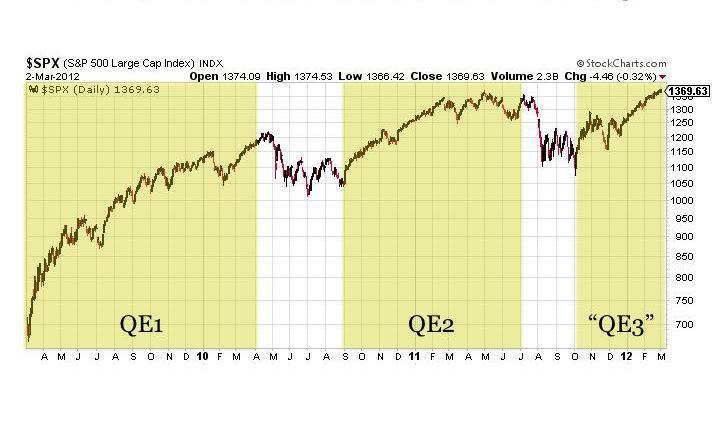 Author: Sherman Lee, Prudent Value
Author: Sherman Lee, Prudent Value
Covestor model: Prudent Value
Welcome to our new reality.
This table shows low and declining yields across the yield curve for three developed countries.
With ten-year risk-free rates hovering about 2%, it will take approximately 36 years to double your money applying the rule of 72. In financial circles, the rule of 72 is a method for estimating an investment’s doubling time. The rule number 72 is divided by the interest percentage per annum to obtain the approximate number of years required for doubling when only a basic calculator is available. In this case, if you were to invest $10,000 with compounding interest at a rate of 2% per annum, the rule of 72 gives 72/2 = 36 years required for the investment to be worth $20,000. A scientific/financial calculator would give a more accurate reading of about 35 years.
At a paltry 2% yield, even retirees with a liquid nest egg of $1 million are only able to generate a risk-free return of about $20,000 per annum until maturity. This harsh reality has pressured many financial advisors, planners, and DIY-ers to seek yield in riskier assets. However, the challenge is that the Fed’s QE1, QE2, and Operation Twist (effectively QE3) initiatives have pushed almost every asset class higher, including the stock market (see chart below; click to enlarge).
Based on this backdrop, investors should take heed of Warren Buffett’s New York Times op-ed that if you wait for the robins, spring will be over. While spring may or may not be over, asset prices are now inherently less cheap than they were three years ago, or even five months ago. Notwithstanding valuations, let’s take a look at some higher yielding (albeit higher risk) alternatives:
High-Yield (Junk) Bonds
These bonds are rated “BB” or lower because of their high default risk. Junk bonds typically offer interest rates three to four percentage points higher than safer government bonds.
Top ranked high yield bond mutual funds by Zacks:
| Ticker | Fund Name | Yield |
| UNHIX | Waddell & Reed High-Income A | 8.5% |
| FHIIX | Federated High-Income Bond A | 7.4% |
| LBHYX | Thrivent High Yield A | 7.3% |
| THYAX | Touchstone High Yield A | 7.3% |
Real Estate Investment Trusts (REIT)
A REIT is a security that sells like a stock on the major exchanges and invests in real estate directly, either through properties or mortgages. REITs receive special tax considerations and typically offer good yields, as well as high liquidity not available to the direct real estate investor.
High yield mortgage REITs:
| Ticker | mREIT Name | Yield |
| CXS | CreXus Investment Corp | 12.7% |
| CMO | Capstead Mortgage Corp | 12.8% |
| MFA | MFA Financial, Inc. | 13.6% |
| NLY | Annaly Capital Management Inc | 14.1% |
Two yielding property REITs
| Ticker | REIT Name | Yield |
| EQR | Equity Residential Common Share | 3.8% |
| VNO | Vornado Realty Trust | 3.4% |
Preferred Stocks
This class of ownership in a corporation has a higher claim on the assets and earnings than common stock. Preferred stocks generally pay a fixed dividend that must be paid out before dividends to common stockholders, and the shares usually do not have voting rights.
Preferred stocks eligible for 15% tax rate:
| Ticker | Description | Moodys |
| GAB-F | Gabelli Equity Trust, 6.20% Series F Cumulative | Aaa |
| RMT-A | Royce Micro-Cap Trust, 6.00% Cumulative | Aaa |
| TYG-A | Tortoise Energy Infrastructure, 6.25% Redeemable | A1 |
| DD-B | E.I. du Pont de Nemours $4.50 Series Cumulative | A2 |
Emerging Market Bonds
Emerging market bonds are issued by countries with developing economies as well as by corporations within those nations.
Top ranked emerging bond funds by Morningstar:
| Ticker | Fund Name |
| FNMIX | Fidelity New Markets Income Fund |
| GMCDX | GMO Emerging Country Debt Fund |
| SEMDX | Western Asset Emerging Markets Debt Portfolio |
| PYEMX | Payden Emerging Markets Bond Fund |
Closed-End Bond Funds – CEFs
Closed-end funds, like ETFs, have an NAV as well, but the trading price may be higher or lower due to supply and demand for the fixed number of shares in the marketplace. Contrastingly, ETFs shares can be created and/or redeemed and therefore generally trade at or close to their NAVs. Closed-end funds are also unique because they often make use of borrowings, which, while adding risk when compared to open-end funds and ETFs, can potentially lead to higher yields and total return.
CEFs trading at discount and with moderate leverage:
| Ticker | CEF Name | Discount | Leverage |
| GDO | Western Asset Glb Corp | -2.47% | 20.98% |
| NZF | Nuveen Dividend Adv 3 | 0.00% | 24.48% |
| PMO | Putnam Muni Advantage | -2.02% | 28.66% |
Master Limited Partnerships – MLPs
This type of limited partnership is publicly traded. The limited partner in the partnership is the person or group that provides the capital to the MLP and receives periodic income distributions from the MLP’s cash flow, whereas the general partner is the party responsible for managing the MLP and receives a compensation generally linked to the performance of the venture.
Three large MLPs with attractive yields:
| Ticker | MLP Name | Yield |
| KMP | Kinder Morgan Energy Partners LP | 5.3% |
| EDP | Enterprise Products Partners LP | 4.8% |
| PAA | Plains All American Pipeline | 5.1% |
Structured Investment Products – SIPs
SIPs are specifically designed to meet an investor’s financial needs by customizing the product mix to adhere to the investor’s risk tolerance. SIPs are generally created by varying the amount of exposure to risky investments and often include the use of various derivatives.
Any payment on the SIPs is subject to credit risk of the issuer. Conservative investors wishing to avoid credit risk can do so by investing in a structured certificate of deposit that is also linked to market indexes, but carries FDIC deposit insurance. In these products, your return of principal is guaranteed while your market exposure is limited. SIPs are offered through brokers and banks and are generally designed to be held until maturity.
Click here to view a term sheet of a typical SIP.
Common Dividend Stocks
These are common stocks of corporations that distribute a portion of their earnings to its common shareholders, typically quarterly, in the form a cash dividend.
Top five DJIA dividend stocks:
| Ticker | Stock Name | Yield |
| T | AT&T | 5.68% |
| VZ | Verizon | 5.19% |
| MRK | Merck | 4.52% |
| PFE | Pfizer | 4.19% |
| GE | General Electric | 3.89% |
Conclusion
Investors looking to enhance the income producing side of their portfolio might consider the above securities. These investors seeking higher yields need to understand the risks associated with each security as well as their own risk tolerance. Risks include interest rate, credit/default, and pre-payment to name a few. For example, cash distributions and share price on an income security can both decline, thereby reducing yield/income and incurring a capital loss (unrealized until sold).
For the more adventurous, investing in residential real estate and renting out the properties may provide attractive yields and safety in principal, given the large decline in home prices and low borrowing costs.



